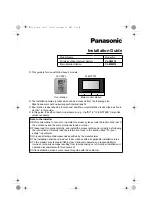
User Manual v1.9
Manual
WI-I/O 9-K
v1.9
Page 25
YU6/900
10dBi Yagi directional antenna with N-type connector
YU16/900
15dBi Yagi directional antenna with N-type connector
The available accessory cables for use with the WI-I/O 9-K units are:
CC10/900
33’ (10m) low loss Cellfoil cable, 3dB loss
CC20/900
66’ (20m) low loss Cellfoil cable, 6dB loss
The following table shows which cables can be used with the different antennas:
Antenna
North America
Australia/NZ
WI-ANT-CLR-900-5-32
any cable
WI-CCSMA-N-33 or WI-CCSMA-N-66
WI-ANT-CLR-900-8-54
any cable
WI-CCSMA-N-66
WI-ANT-YGI-10-6
WI-CCSMA-N-66
external cable with loss > 9dB
WI-ANT-YGI-15-16
external cable with loss > 9dB
should not be used
Connections between the antenna and coaxial cable should be carefully taped to prevent ingress
of moisture. Moisture ingress in the coaxial cable is a common cause for problems with radio
systems, as it greatly increases the radio losses. We recommend that the connection be taped,
firstly with a layer of PVC Tape, then with a vulcanising tape such as “3M 23 tape”, and finally
with another layer of PVC UV Stabilised insulating tape. The first layer of tape allows the joint
to be easily inspected when trouble shooting as the vulcanising seal can be easily removed.
Where antennas are mounted on elevated masts, the masts should be effectively earthed to avoid
lightning surges.
Where the antenna is mounted outside of an industrial plant environment,
a coaxial surge diverter is recommended.
If the antenna is not already shielded from lightning
strike by an adjacent earthed structure, a lightning rod may be installed above the antenna to
provide shielding.
















































